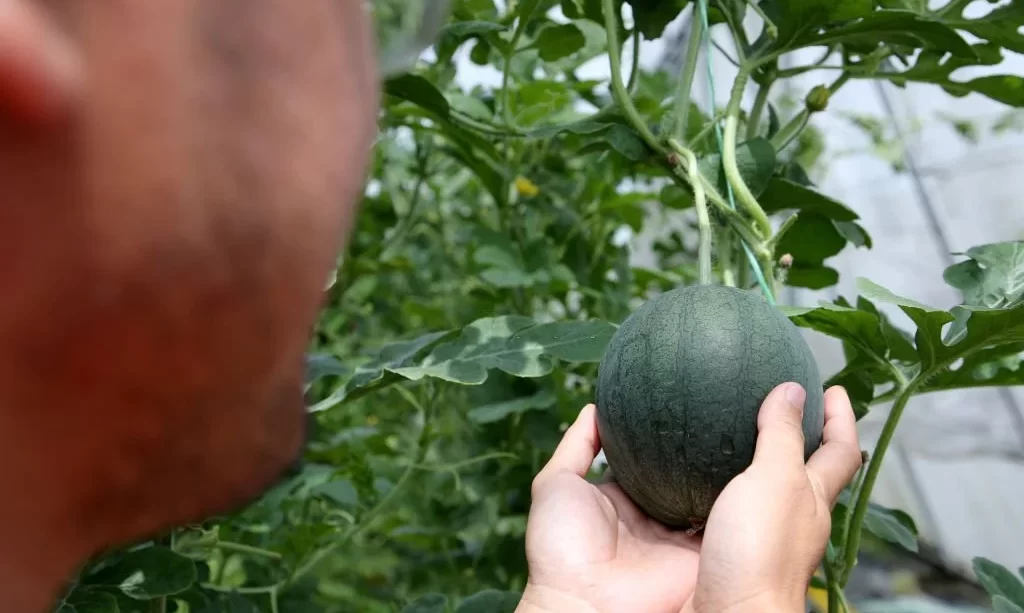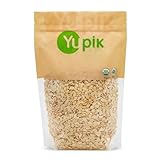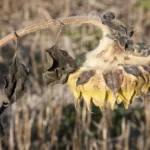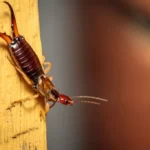Watermelons, those refreshing and summery delights, have a unique place in the world of fruits. They’re a favorite for picnics, barbecues, and sunny days at the beach. Yet, when it comes to their growth, there’s a common misconception that often needs clarifying: do watermelons grow on trees? In this article, we’re here to unravel the mystery surrounding the growth of watermelons and set the record straight.
- Organic raw watermelon seeds, without shells
- No added salt or oil
- Certified organic, gluten-free & kosher
- Source of fiber, protein & iron
- Healthy snack & topping Ideal in baked goods, yogurt, oatmeal, soups and more
Watermelon Plants
To understand where watermelons come from, we must first acquaint ourselves with the watermelon plant itself. Watermelons belong to the botanical family Cucurbitaceae, a group that includes cucumbers, pumpkins, and yes, watermelons. These plants have distinct characteristics that set them apart from tree-bearing fruits.
Watermelon plants are sprawling vines with large, lobed leaves and tendrils. They’re not vertically structured like trees but rather have a horizontal, ground-hugging growth pattern. These vines have a remarkable ability to spread, covering substantial areas as they grow. When it comes to watermelons, the fruit doesn’t directly emerge from towering branches, as is the case with tree fruits like apples or cherries. Instead, it has a unique journey of its own, intricately connected to the plant’s sprawling vines and flowering patterns. So, it’s safe to say that watermelons do not grow on trees, but they do have an equally fascinating growth process that we’ll explore further.
Dispelling the Myth: Watermelons and Trees
Now, let’s address the common myth: the idea that watermelons grow on trees. This is a misconception that has persisted, perhaps due to the size and abundance of watermelon fruits. However, it’s important to clarify that there are no watermelon trees. Watermelons are most definitely not tree fruits.
Watermelons grow on the ground, close to the root system of the sprawling vine. The fruit develops from a flower, and as it matures, it can become quite heavy, causing it to rest on the soil. This is where the misconception may arise – seeing large, round watermelons resting on the ground might lead some to believe they come from trees. However, the truth is that they come from the fruitful endeavors of these remarkable vine plants.
As we venture further into this article, we’ll delve into the fascinating stages of watermelon growth, from seed to sweet, juicy fruit, providing a deeper understanding of their unique development process. So, let’s set aside the notion of watermelon trees and embark on a journey through the growth of these beloved summer treats.
The Growth Stages of Watermelons
Watermelons have a remarkable journey from seed to table, passing through distinct growth stages. Understanding these stages can help you appreciate the complexity of their development:
- Seed Germination: It all starts with a tiny watermelon seed. When planted in the soil, the seed germinates, sending out roots and a shoot.
- Vine Growth: Once germinated, the watermelon plant begins to grow its sprawling vines. These vines creep along the ground, taking up space in the garden.
- Flowering: As the vines mature, they produce vibrant yellow flowers. These flowers are crucial as they lead to the development of watermelon fruits. Bees and other pollinators play a vital role in transferring pollen between these flowers, allowing them to set fruit.
- Fruit Formation: After successful pollination, the fertilized flower transforms into a tiny, green watermelon. Over time, this small fruit enlarges and gains mass.
- Ripening: The most awaited stage for watermelon enthusiasts is ripening. During this period, the watermelon undergoes several changes. Its skin transitions from green to the familiar shades of green, striped green, or even yellow. The fruit’s sugar content increases, making it sweeter and more flavorful.
Watermelon Plant Care: Cultivating Healthy Vines
To ensure healthy watermelon vines and a bountiful harvest, gardeners and farmers follow certain care practices:
- Sunlight: Watermelon plants thrive in full sun, so ensure they receive at least 6 to 8 hours of sunlight daily.
- Soil Quality: Well-draining, fertile soil is essential. Amending the soil with compost can provide the necessary nutrients.
- Watering: Consistent, deep watering is crucial, especially during the fruiting stage. Avoid overhead watering to prevent fungal diseases.
- Support: As the vines grow, providing support for the developing watermelons can prevent fruit damage and keep them off the damp ground.
- Pest and Disease Management: Regularly inspect your plants for signs of pests or diseases and take appropriate measures to address any issues.
- ALL-IN-ONE POTTING SOIL SOLUTION: FoxFarm ocean forest potting soil is a blend designed to give your plants everything they need to thrive. Ideal for container plants, this planting soil provides optimal nutrient and soil aeration
- MOISTURE-LOCKING NUTRIENT BLEND: This organic potting soil for plant is packed with aged forest products, sphagnum peat moss, earthworm castings, bat guano, and fish emulsion, each ingredient enhances moisture retention and nutrient uptake
- TOP-NOTCH SOIL FOR EVERY PLANT: From roses and shrubs to seedlings and trees, this garden soil supports vigorous growth and branching. This outdoor & indoor plant soil’s pH-adjusted blend promotes healthy, lush foliage for all plant varieties
- YOUR GO-TO SOIL FOR ALL MEDIUMS: Our potting soil mix is perfect for container gardens, houseplants, and outdoor setups. Ocean plant versatile blend provides a balanced environment for robust growth, ensuring your plants thrive in any setting
- CONVENIENT SOIL READY TO USE: This houseplant potting soil is ready to use out of the bag, no additional ingredients are needed. Use for planting or top-dressing, with the optional pairing of FoxFarm liquid fertilizers for enhanced growth all season
Harvesting Watermelons: Recognizing Ripeness
Harvesting watermelons at the right time is essential for optimal flavor and sweetness:
- Tapping: A classic method is to tap the watermelon with your knuckles. A ripe one will produce a dull, hollow sound rather than a sharp, metallic one.
- Thumping: Another technique is to thump the watermelon gently. A ripe watermelon should sound deep and dull when thumped.
- Appearance: Examine the watermelon’s appearance. Look for a dull skin, a uniform shape, and a slightly flat spot on the bottom, indicating it has rested on the ground during growth.
- Tendril Drying: Check the tendril closest to the watermelon’s stem. If it has turned brown and dried, it’s a sign of ripeness.
Conclusion
In conclusion, while the misconception that watermelons grow on trees persists, we’ve unveiled the truth behind their growth. Watermelons are not tree fruits; they are the product of sprawling vines with a fascinating journey from seed to sweet, juicy fruit. Understanding the growth stages, proper care practices, and recognizing ripeness can enhance your appreciation of these summer delights. Whether you’re growing them in your garden or selecting the perfect one at the market, you now have a deeper understanding of the remarkable process that brings watermelons to your table. Enjoy their refreshing sweetness on those warm, sunny days!





